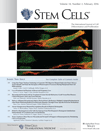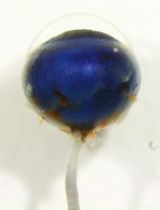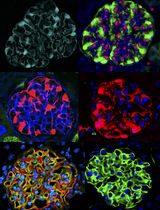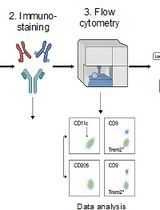- EN - English
- CN - 中文
Isolation and Primary Culture of Various Cell Types from Whole Human Endometrial Biopsies
分离和原代培养人子宫内膜内的各种细胞
发布: 2016年11月20日第6卷第22期 DOI: 10.21769/BioProtoc.2028 浏览次数: 20195
评审: Anonymous reviewer(s)
Abstract
The isolation and primary culture of cells from human endometrial biopsies provides valuable experimental material for reproductive and gynaecological research. Whole endometrial biopsies are collected from consenting women and digested with collagenase and DNase I to dissociate cells from the extracellular matrix. Cell populations are then isolated through culturing, filtering and magnetic separation using cell-surface antigen markers. Here we provide a comprehensive protocol on how to isolate and culture individual cell types from whole endometrial tissues for use in in vitro experiments.
Background
The human endometrium is the inner most mucosal layer of the uterus. It consists of a columnar epithelium and basal stromal layer that undergoes cyclical regeneration, growth and transformation in response to circulating hormones. The differentiation of the endometrial lining into a glandular secretory phenotype provides a hospitable environment for blastocyst implantation and successful pregnancy. In the absence of pregnancy this layer is shed, leading to menstruation. The isolation and culture of cells from human endometrial biopsies allows for in vitro functional assessment and the study of cell characteristics in relation to patient outcomes. The isolation and culture of endometrial cells is an invaluable research model to investigate many aspects of gynaecological and obstetrical medicine including infertility, implantation failure, recurrent miscarriage and menstrual disorders. Whole human endometrial biopsies contain human endometrial stromal cells (HESCs), luminal and glandular endometrial epithelial cells (HEECs), red blood cells and a mixed population of immune cells. HESCs can be easily and inexpensively isolated from whole biopsies and actively proliferate in culture for up to 5 passages without significant change in their growth dynamics. This provides a large window of opportunity for experimental analysis. Furthermore, within dissociated HESCs there is a sub-population of perivascular progenitor mesenchymal stem-like cells that can be isolated using the perivascular-specific antigen SUSD2 and its cognate antibody W5C5. Here we provide in detail an updated and expanded protocol from those published previously (Masuda et al., 2012; Chen and Roan, 2015) to describe steps in isolating and culturing different cell types from whole human endometrium. We provide further information on biopsy collection, detailed protocols for isolation of progenitor cells and additional procedures to increase epithelial cell yield and culturing efficiency.
Materials and Reagents
- Petri-dish 92 x 16 mm (SARSTEDT, catalog number: 82.1473 )
- Disposable scalpels (Swann Morton, catalog number: 0501 )
- 15 ml CELLSTAR® tubes (Greiner Bio One, catalog number: 188261 )
- 50 ml CELLSTAR® tubes (Greiner Bio One, catalog number: 227270 )
- 7 ml Bijoux tubes (Greiner Bio One, catalog number: 189176 )
- FisherBrandTM Nylon mesh cell strainer, 40 µm (Thermo Fisher Scientific, Fisher Scientific, catalog number: 11587522 )
- 0.2 µm Minisart® NML syringe filter (Sartorius Stedim Biotech, catalog number: 16534-K )
- 20 ml syringes (BD, catalog number: 300613 )
- 60 ml syringes (BD, catalog number: 309653 )
- Sterile pipette filter-tips 1,000 µl (Alpha Laboratories, catalog number: ZP1250S )
- Sterile pipette filter-tips 100 µl (Alpha Laboratories, catalog number: ZP1200S )
- FisherbrandTM glass Pasteur pipettes (Thermo Fisher Scientific, Fisher Scientific, catalog number: 1156-6963 )
- MS columns (Miltenyi Biotec, catalog number: 130-042-201 )
- Wallach Endocell® disposable endometrial cell sampler (Wallach Surgical Devices, catalog number: 908014A )
- Human endometrial biopsies (see step A)
- Cell culture media
- DMEM/F12 (1:1) with phenol red (Thermo Fisher Scientific, GibcoTM, catalog number: 31330-038 )
- L-glutamine (Thermo Fisher Scientific, GibcoTM, catalog number: 25030-081 )
- Antibiotic/antimycotic (Thermo Fisher Scientific, GibcoTM, catalog number: 15240-062 )
- β-estradiol (Sigma-Aldrich, catalog number: E2758 )
- Recombinant human insulin (Sigma-Aldrich, catalog number: 91077C )
- Acetic acid, glacial ≥ 99.7% (Sigma-Aldrich, catalog number: 695092 )
- DMEM/F12 (1:1) with phenol red (Thermo Fisher Scientific, GibcoTM, catalog number: 31330-038 )
- Tissue digestion media
- DMEM/F12, phenol-free media (Thermo Fisher Scientific, GibcoTM, catalog number: 11039-021 )
- Collagenase from Clostridium histolyticum (Sigma-Aldrich, catalog number: C9891-500MG )
- DNase I from bovine pancreas (Roche Diagnostics, catalog number: 11284932001 )
- DMEM/F12, phenol-free media (Thermo Fisher Scientific, GibcoTM, catalog number: 11039-021 )
- Trypsin-EDTA, 0.25% (Thermo Fisher Scientific, GibcoTM, catalog number: 25200-056 )
- Ficoll-paque plus medium (GE Healthcare, catalog number: 17-1440-02 )
- Separation buffer (see Recipes)
- PE anti-human SUSD2, clone: W5C5 antibody (Biolegend, catalog number: 327406 )
- Anti-PE microbeads (Miltenyi Biotec, catalog number: 130-048-801 )
- Ethanol, absolute (Thermo Fisher Scientific, Fisher Scientific, catalog number: 10437341 )
- Sterile distilled water
- Dextran-coated charcoal (DCC)-treated FBS (see Recipes)
- Digestion media (see Recipes)
- Culture media (see Recipes)
Equipment
- 25 cm2 CELLSTAR® culture flasks (Greiner Bio One, catalog number: 690175 )
- 75 cm2 CELLSTAR® culture flasks (Greiner Bio One, catalog number: 658175 )
- 5 ml serological pipettes (Greiner Bio One, catalog number: 606180 )
- 10 ml serological pipettes (Greiner Bio One, catalog number: 607180 )
- Pipette controller/pipette aid (e.g., STARLABS, catalog number: S7166-0010 )
- Vacuum-driven 0.22 μm filtration system (EMD Millipore, catalog number: SCGPT05RE )
- LUNATM BF automated cell counter (Logos Biosystems, catalog number: L10001 )
- LUNATM cell counting slides (Logos Biosystems, catalog number: L12001 )
- miniMACS separator (Miltenyi Biotec, catalog number: 130-042-102 )
- MACS multistand (Miltenyi Biotec, catalog number: 130-042-303 )
- Walker Class II cell culture microbiological safety cabinet (Walkers Safety Cabinets, model: Class II MSC )
- FisherbrandTM FB 70155 aspirator (Thermo Fisher Scientific, Fisher Scientific, catalog number: 11533485 )
- Grant Instruments water bath (Grant Instruments, model: OLS200 )
- Thermo Scientific HeracellTM 150i humidified tissue culture incubator (set at 37 °C and 5% CO2) (Thermo Fisher Scientific, catalog number: 51026280 )
- Sigma 3-16KL bench-top centrifuge (Sigma Laborzentrifugen, model: 3-16KL )
- Bright-field Leica DMIL microscope (Leica Microsystems, model: Leica DMIL )
Procedure
文章信息
版权信息
© 2016 The Authors; exclusive licensee Bio-protocol LLC.
如何引用
Barros, F. S. V., Brosens, J. J. and Brighton, P. J. (2016). Isolation and Primary Culture of Various Cell Types from Whole Human Endometrial Biopsies. Bio-protocol 6(22): e2028. DOI: 10.21769/BioProtoc.2028.
分类
干细胞 > 成体干细胞 > 基质细胞
细胞生物学 > 细胞分离和培养 > 细胞分离
您对这篇实验方法有问题吗?
在此处发布您的问题,我们将邀请本文作者来回答。同时,我们会将您的问题发布到Bio-protocol Exchange,以便寻求社区成员的帮助。
提问指南
+ 问题描述
写下详细的问题描述,包括所有有助于他人回答您问题的信息(例如实验过程、条件和相关图像等)。
Share
Bluesky
X
Copy link












